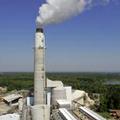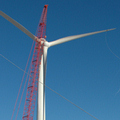 美國國會民主黨團3月31日推出了乾淨能源法草案,草案內容明訂以市場導向的碳總量管制與交易機制,作為電力公用事業、石油公司和工廠等產業的溫室氣體減量方案,這些產業排碳量加起來總共佔了美國溫室氣體排放量的85%
美國國會民主黨團3月31日推出了乾淨能源法草案,草案內容明訂以市場導向的碳總量管制與交易機制,作為電力公用事業、石油公司和工廠等產業的溫室氣體減量方案,這些產業排碳量加起來總共佔了美國溫室氣體排放量的85%
這份2009美國乾淨能源安全法案(American Clean Energy and Security, ACES),是由加州籍眾議員亨利維克曼(Henry Waxman)與瑪肯(Edward Markey )制訂了,他們表示這個法案確定了乾淨能源經濟藍圖。
「這個法案將可以創造乾淨能源的工作機會,減少我們對外國石油的依賴,使美國成為能源科技的全球領袖,」瑪肯如此表示,他已經舉行過許多場關於此法案的公聽會。
這個法案有四大部分:
- 乾淨能源包含了促進可再生能源、碳捕集與儲存技術、低碳燃料、乾淨電力交通工具和智慧電力網和電力傳輸。
- 能源效率包含了增加跨經濟產業的能源效率,包括建築、設備、交通和產業界。
- 全球暖化包括了對抑制散熱的污染物之設置排放限額。
- 變革的章節包括在變革往乾淨能源經濟的過程中,如何保護美國消費者和產業並促進綠色工作機會。
限制溫室氣體排放量的章節建議,任何組織如果每年排放超過25000噸的二氧化碳,每噸排放到大氣之中的氣體都必須有可交易的聯邦額度,稱之為配額(allowances),這個計畫限制了配額的最高限度,並每年會減少配合的數量。
這個計畫的目標是確保在2012年時,涵蓋在法案之下的團體總共可以減少溫室氣體排放至2005年標準的3%,2020年可減少到20%,2030年到42%而2050年到83%。
 這個法案透過達成防制國際森林砍伐的協議導引了美國環保署達到更進一步的溫室氣體減排,在2020年之前這些協議將會達到相當於2005年標準10%的減排量。
這個法案透過達成防制國際森林砍伐的協議導引了美國環保署達到更進一步的溫室氣體減排,在2020年之前這些協議將會達到相當於2005年標準10%的減排量。
這份草案設立了一個新的低碳交通燃料標準以促進先進的生質燃料和其他乾淨交通的燃料,城市、州或是私人公司有大規模的電氣車輛示範可以核准補助或是貸款,並核准了對汽車公司改裝其車廠以生產電氣車予以財務支援。
這份草案協助了部署智慧型電網,包括協助促進智慧電網在新家電中的耐受力的措施。該草案也指示聯邦能源法規委員會提供新的發送器來傳輸由可再生能源產生的電力。
但是美國氣候行動聯盟(U.S. Climate Action Partnership, 簡稱USCAP)表示排放額度分配的章節需要修改,「美國氣候行動聯盟建議剛開始時應該有一大部分的排放額度免費提供給被管轄下的組織團體,以緩和對消費者的成本增加,特別是針對經濟體中比較敏感的產業,這樣的免費發送會慢慢隨時間消失。」
Congressional Democrats today released clean energy legislation that establishes a market-based cap-and-trade program for reducing global warming pollution from electric utilities, oil companies, and factories that together are responsible for 85 percent of U.S. greenhouse gas emissions.
Henry Waxman of California, who chairs the House Energy and Commerce Committee and Edward Markey who chairs the Energy and Environment Subcommittee introduced a discussion draft of the American Clean Energy and Security Act of 2009, or ACES, which they say charts a new course toward a clean energy economy.
"This legislation will create clean energy jobs that can be shipped overseas, reduce our dependence on foreign oil, and make America the global leader in energy technology," said Chairman Markey, who has held many hearings on the major issues in the bill.
The legislation has four sections:
- A clean energy title that promotes renewable sources of energy, carbon capture and sequestration technologies, low-carbon fuels, clean electric vehicles, and the smart grid and electricity transmission
- An energy efficiency title that increases energy efficiency across all sectors of the economy, including buildings, appliances, transportation, and industry
- A global warming title that places limits on emissions of heat-trapping pollutants
- A transitioning title that protects U.S. consumers and industry and promotes green jobs during the transition to a clean energy economy
The section that limits greenhouse gas emissions provides that entities emitting more than 25,000 tons per year of carbon dioxide equivalent must have tradable federal permits, called allowances, for each ton of gas emitted into the atmosphere. The program sets a cap on available allowances and reduces the number of allowances issued each year.
The program aims to ensure that emissions from the covered entities in total are reduced by three percent below 2005 levels in 2012, 20 percent below 2005 levels in 2020, 42 percent below 2005 levels in 2030, and 83 percent below 2005 levels in 2050.
The legislation directs the U.S. Environmental Protection Agency to achieve additional reductions in greenhouse gas emissions by entering into agreements to prevent international deforestation. By 2020, these agreements are expected to achieve reductions equal to 10 percent of U.S. emissions in 2005.
The draft establishes a new low-carbon transportation fuel standard to promote advanced biofuels and other clean transportation fuels. It authorizes grants or loan guarantees to cities, states, or private companies for large-scale demonstrations of electric vehicles and authorizes financial support to car companies to retool their plants for electric vehicles.
The draft facilitates the deployment of a smart grid, including measures to help promote smart grid capabilities in new home appliances. It directs the Federal Energy Regulatory Commission to provide for new transmission lines to carry electricity generated from renewable sources.
But USCAP says the section on allocation of emissions allowances needs revision. "USCAP recommends that a significant portion of allowances be initially distributed free to entities covered by the cap in order to mitigate costs to consumers and particularly vulnerable sectors of the economy. This free distribution should then be phased out over time," the coalition said.
Click here to see an Executive Summary of the draft American Clean Energy and Security Act of 2009.

